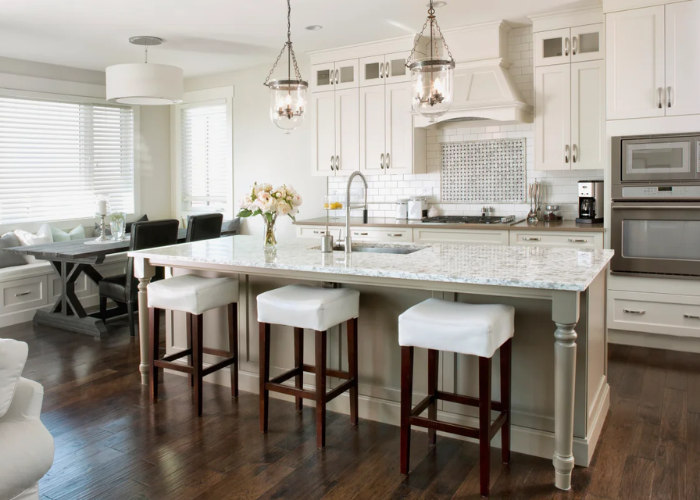Virtual Reality (VR) has made a significant impact in many industries, but perhaps its most profound effect has been in the healthcare sector. VR technology has the potential to revolutionize the way medical professionals diagnose, treat, and study patients, as well as how patients interact with their healthcare providers. From clinical trials to training medical students, VR has already begun to make an indelible mark in healthcare, and the future of VR in healthcare looks even brighter. In this blog, we’ll explore what VR is, how it’s currently being used in healthcare, the benefits and challenges of VR in healthcare, and what the future of VR in healthcare looks like.
What is Virtual Reality?
At its core, Virtual Reality (VR) is a computer-generated environment that immerses users in a three-dimensional digital world. This environment can be interactive, allowing users to interact with objects in the space. VR also has the ability to manipulate sensory experiences, such as sight, sound, and touch, allowing users to interact in a more natural way.
VR can be experienced in a variety of ways. The most common form of VR is a head-mounted display (HMD) that covers the eyes and ears of the user and immerses them into the virtual world. Other methods of VR include hand-held controllers, omni-directional treadmills, and haptic feedback suits.
How is VR Being Used in Healthcare?
VR is already making a significant impact in the healthcare industry. From experimental treatments to surgical training, VR is being used in a variety of ways.
VR is being used to diagnose and treat conditions such as PTSD, autism, and chronic pain. Through virtual therapies, patients are exposed to simulated environments that allow them to confront and manage their fears in a safe and controlled way. VR is also being used to help patients prepare for medical procedures and to develop coping mechanisms for living with chronic pain.
VR is also helping medical professionals to improve their skills and to practice new techniques. Medical students are using VR to practice surgeries and medical procedures in a simulated environment. Medical professionals are also using VR to study the effects of different medications and treatments on the human body.
Benefits of VR in Healthcare
VR has the potential to revolutionize the healthcare industry in a variety of ways.
- One of the most significant benefits of VR in healthcare is its ability to reduce the cost of medical treatments.
- By using VR to simulate medical procedures and treatments, medical professionals can practice and refine their skills without the need for expensive medical equipment or expensive medical supplies.
- VR is also helping to improve the accuracy of diagnoses and treatments. By using VR to simulate medical procedures and treatments, medical professionals can identify the underlying causes of a patient’s condition and develop more effective treatments.
Finally, VR is helping to reduce the amount of time it takes to train medical professionals. By using VR to simulate medical procedures, medical students can learn and practice procedures in a fraction of the time it would take to perform them in a physical environment.
Challenges of VR in Healthcare
As with any new technology, there are a number of challenges associated with the use of VR in healthcare.
One of the most significant challenges is the cost of VR equipment. While VR technology has become more affordable in recent years, it is still expensive and often out of reach for many healthcare providers.
Another challenge is the lack of standards for VR technology. As VR technology continues to evolve, it is important that healthcare providers use technology that is reliable and up-to-date.
Finally, there is a lack of understanding of the potential benefits of VR in healthcare. While there is a growing body of research that demonstrates the potential of VR in healthcare, many healthcare providers are still hesitant to embrace the technology due to a lack of understanding of how it can be used.
The Future of VR in Healthcare
The future of VR in healthcare looks extremely promising. VR technology has the potential to revolutionize the way medical professionals diagnose, treat, and study patients, as well as how patients interact with their healthcare providers.
As VR technology continues to evolve, it will become more affordable and more widely adopted by healthcare providers. This will enable medical professionals to use VR to simulate medical procedures, diagnose and treat conditions, and develop new treatments.
VR technology also has the potential to revolutionize the way medical students are trained. By using VR to simulate medical procedures and treatments, medical students can learn and practice procedures in a fraction of the time it would take to perform them in a physical environment.
Conclusion
Virtual Reality (VR) technology has the potential to revolutionize the healthcare industry. From experimental treatments to surgical training, VR is being used in a variety of ways to improve the accuracy of diagnoses and treatments, reduce the cost of medical treatments, and reduce the amount of time it takes to train medical professionals. As VR technology continues to evolve, it will become more affordable and more
















